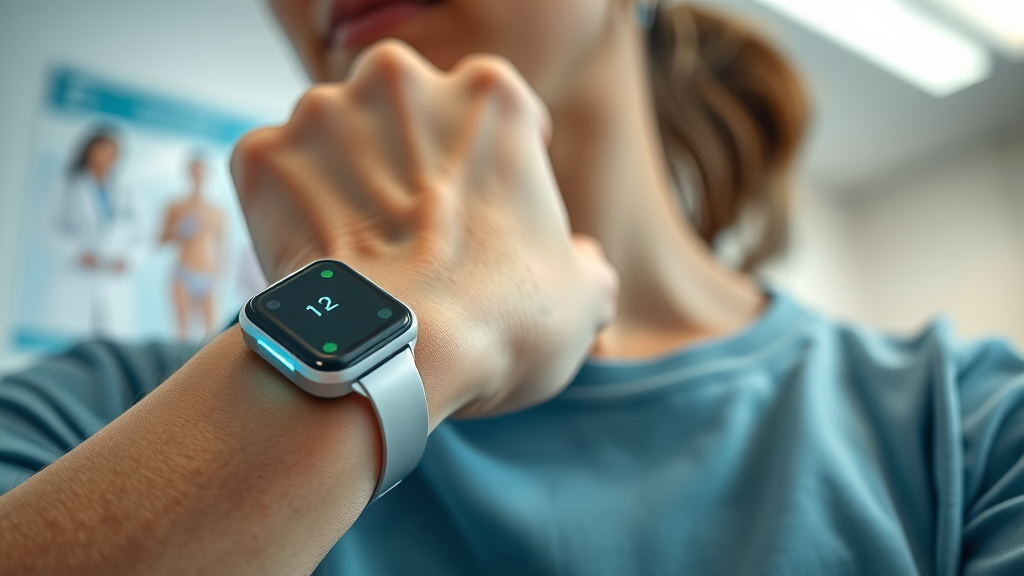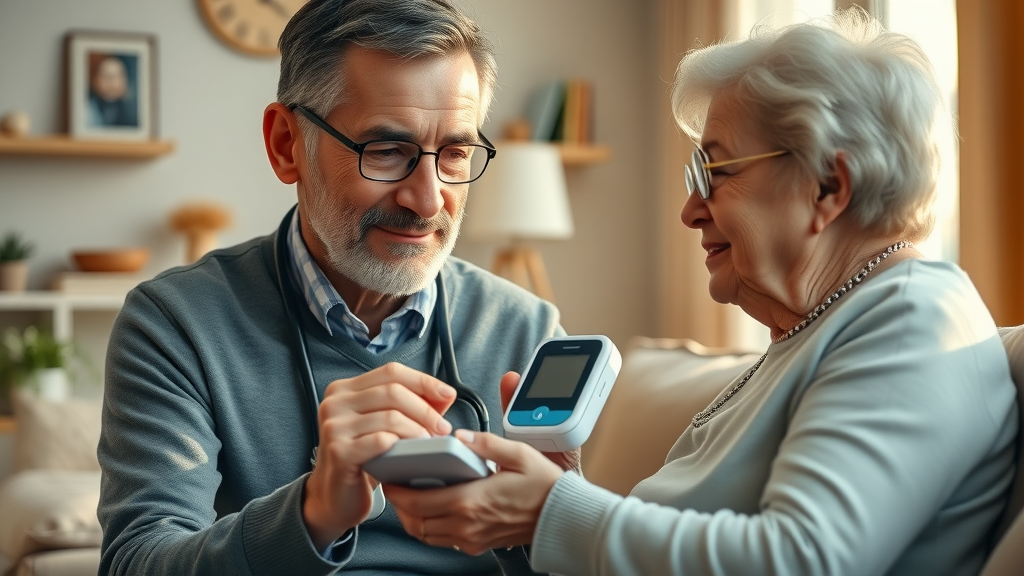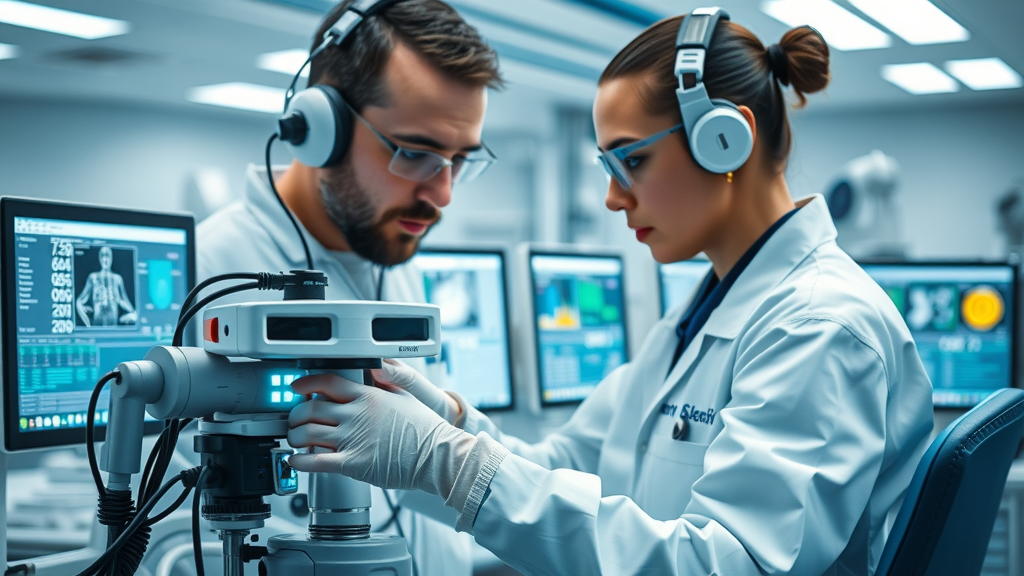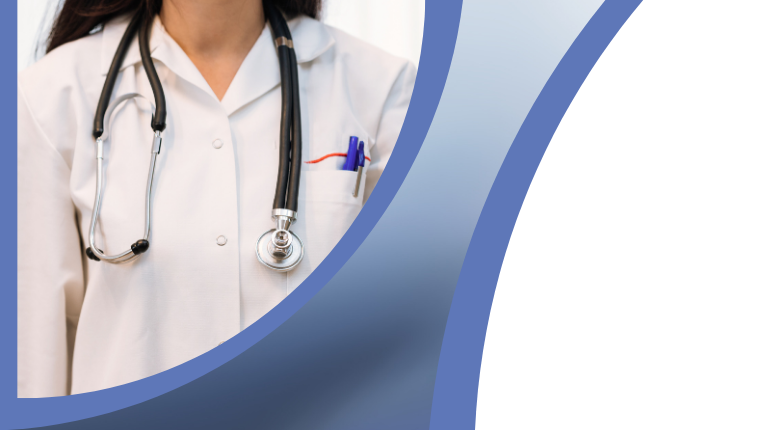Did you know that over 60% of outpatient visits could be managed remotely with physician remote care tools? This shift is not just a futuristic vision—it's the driving force behind a new era in patient monitoring and healthcare delivery. As monitoring devices get smarter and health tools more integrated, today’s care providers are transforming the way they monitor, engage, and support patients. Whether you’re a provider eager to modernize your practice or a patient seeking improved outcomes, this comprehensive guide unpacks everything you need to know to stay ahead in the rapidly evolving world of remote care.

Why Physician Remote Care Tools Are Essential: A New Era in Remote Patient Monitoring
Physician remote care tools have quickly evolved from emerging technology to necessities in modern healthcare . With advances in remote patient monitoring and health tools, physicians are now able to track vital patient data and intervene before conditions worsen—all without requiring patients to leave home. This transformation is especially vital for patients with chronic conditions, who benefit from earlier interventions, more personalized care, and fewer disruptions to daily life.
Recent reports indicate that over 60% of outpatient visits can be managed effectively using remote patient monitoring devices and related technologies. This profound shift means care delivery is not only more efficient for healthcare providers, but also enhances patient engagement and satisfaction. By integrating these patient monitoring devices and leveraging real-time virtual care, providers are improving patient outcomes while streamlining clinical workflows.
- According to recent studies, over 60% of outpatient visits could effectively be managed through physician remote care tools, transforming remote patient monitoring and patient outcomes. Discover how remote care and health tools have become vital for healthcare providers.
Unlocking the Potential: What Physician Remote Care Tools Can Do for You
Investing in physician remote care tools unlocks a world of benefits for both healthcare providers and patients. Enhanced patient monitoring empowers care teams to continuously track heart rate, blood pressure, glucose levels, and other critical health information, leading to higher quality of care and more timely medical interventions. With monitoring devices seamlessly connected to electronic health records, patient data is always up-to-date and accessible by the entire care team.
Care providers can now remotely engage with patients , provide follow-ups, and adjust treatment plans—all through virtual care platforms that integrate health tools and remote patient monitoring devices. This efficiency translates into better health outcomes, reduced hospital readmissions, and more proactive chronic disease management, ultimately benefiting both patients and providers alike.

- Understand core features and benefits:
- Enhanced patient monitoring
- Efficient use of remote patient monitoring devices
- Seamless integration with health tools and electronic health records
Leading Types of Physician Remote Care Tools for Effective Patient Monitoring
Wearable Remote Patient Monitoring Devices: From Blood Pressure to Heart Rate
Wearable patient monitoring devices are at the forefront of remote patient care. Modern health tools like smart blood pressure cuffs, glucose monitors, and wearable cardiac devices let healthcare providers gather objective, real-time data on patient health. These devices not only track essential vitals such as heart rate and blood pressure, but also streamline data transfer directly to the electronic health record for each patient. This automatic transfer ensures care teams always have access to up-to-date patient data for better-informed decisions and improved quality of care.
Choosing the right remote patient monitoring device is crucial for reliable outcomes. Care providers compare features such as battery life, connectivity, measurement accuracy, and user-friendliness to select technology that best fits their patient monitoring program. In turn, these choices deliver more accurate monitoring and support earlier intervention, leading to fewer complications for patients and better health outcomes overall.
- Most-used patient monitoring devices include:
- Blood pressure monitors
- Glucose monitors
- Cardiac monitoring devices

Telehealth Technology: Virtual Care Platforms for Physicians and Patients
Telehealth technology has seamlessly connected patients and providers in ways never before possible. Through video consultations, remote assessments, and secure messaging, care delivery now extends beyond traditional clinic walls. These virtual care platforms empower physicians to diagnose, monitor, and provide guidance from virtually anywhere, maintaining patient relationships and continuing essential care for those with limited mobility or living in remote areas.
Some of the key telehealth features include secure video visits, integrated messaging for quick follow-ups, and patient access to care teams between scheduled appointments. Remote patient monitoring is greatly enhanced by these platforms, as they allow easy integration of patient data and support continuity of care—even as patients move between different healthcare organizations and care providers.
- Key telehealth features supporting physician remote care tools:
- Video consultations
- Secure messaging
- Remote assessments and follow-ups
Electronic Health Tools: Utilizing Electronic Health Records and Integration
Health tools that integrate electronic health records (EHR) have become foundational to effective patient monitoring. These systems aggregate data from monitoring devices, telehealth technology, and in-person care, providing a single unified record for each patient. As a result, every member of the care team gains immediate access to real-time health information, lab results, history, and care plans. Integration with EHRs also supports smoother clinical workflows, enabling more efficient patient care and better communication among healthcare providers.
The advantage of comprehensive health record systems is evident in multi-provider environments and for patients with chronic conditions. Providers no longer need to chase down records from disparate sources. Instead, care teams can collaborate quickly, reducing mistakes, duplicative testing, and missed interventions. Ultimately, these integrated solutions propel patient-centric care to new heights, offering superior outcomes and efficiency in healthcare delivery.
- Benefits of electronic health record integration:
- Real-time data access
- Comprehensive patient monitoring
- Streamlined communication between care teams
| Tool Type | Monitoring Devices Examples | Virtual Care Features | EHR Integration | Pros | Cons |
|---|---|---|---|---|---|
| Wearable Monitoring Devices | Blood Pressure Cuff, Glucose Monitor, Heart-Rate Sensor | Patient data upload, alerts | Often supported | Continuous data, patient adherence | Device learning curve, battery reliance |
| Telehealth Platforms | Integrated webcams, mobile health apps | Video visits, secure chat, ePrescribing | Seamless with modern systems | Remote flexibility, ease of access | Requires internet, data privacy |
| Comprehensive EHR Systems | All monitoring devices compatible | Dashboards, clinician messaging | Central to platform | Unified patient record, robust reporting | Implementation complexity/cost |
How Physician Remote Care Tools Improve Patient Outcomes and Remote Patient Monitoring
Physician remote care tools are critical for improving patient outcomes, especially for individuals with chronic illnesses. By providing continuous monitoring and rapid intervention, these patient monitoring devices and virtual care platforms reduce complications, treatment delays, and hospital readmissions. Healthcare providers can leverage real-time patient data to tailor treatments, adjust medications, and engage patients in self-management—all vital steps in elevating care quality and efficiency.
Remote patient monitoring is now viewed as a cornerstone of proactive healthcare. Through improved access and timely detection of issues, patients experience fewer emergencies and better long-term health. With care providers receiving detailed trends and alerts on key indicators like blood pressure and heart rate, early action is the new normal—leading to measurable improvements in health outcomes and cost savings for healthcare organizations.
Success Stories: Remote Care Transforming Chronic Disease Management
Across healthcare organizations, there are powerful stories where remote care tools have reshaped chronic disease management. Patients with heart conditions, for example, benefit from RPM devices monitoring heart rate and rhythms, alerting care teams of irregularities. Similar success is found in diabetes management, with real-time glucose monitoring enabling proactive interventions before problems escalate. The continuous flow of patient data and seamless provider-patient communication means better adherence, greater patient engagement, and a higher quality of care.
"Remote patient monitoring has reduced hospital readmissions by up to 38% for chronic illness management." — Leading Medical Journal
Success rates like these highlight why healthcare providers are rapidly adopting monitoring devices and telehealth technology as part of their patient monitoring programs. The data-driven approach ensures that those at greatest risk receive personalized attention and care beyond the traditional office setting.
Case Examples: Real-Life Implementation of Remote Patient Monitoring Devices

Real-world implementation of remote patient monitoring devices continues to deliver positive outcomes. Hospitals now provide discharged cardiac patients with wearable blood pressure monitors, enabling round-the-clock monitoring and early warnings of complications. Diabetes clinics have adopted remote glucose meters that transmit readings to care teams, who adjust treatment in real-time. These health tools not only improve patient outcomes, but significantly enhance patient satisfaction with the overall care experience.
Patients appreciate the convenience of being able to monitor their own health under the guidance of their care provider. Providers benefit from objective, continuous health data, enabling more informed clinical decisions and earlier interventions—a winning combination for transforming patient care.
- Examples:
- Remote blood pressure tracking post-discharge
- Ongoing monitoring for diabetes and heart conditions
- Enhanced patient satisfaction rates
Integration Strategies: Maximizing the Impact of Physician Remote Care Tools
Seamless integration is the key to unlocking the full value of physician remote care tools and health tools. Healthcare organizations and care teams must thoughtfully select remote patient monitoring devices and virtual care platforms that fit their clinical workflows and technology ecosystem. The success of any digital health endeavor relies on solid integration between devices, telehealth technology, and electronic health record systems—ensuring all patient data is consolidated for optimal decision-making.
For care providers, this means reviewing current processes, engaging IT support for technical setup, and maintaining an ongoing dialogue between clinicians, IT, and administrative teams. By aligning these health tools with existing workflows, practices can realize the greatest benefits with minimal disruption to daily operations and patient care.
Best Practices for Deploying Remote Patient Monitoring and Health Tools
Adopting remote patient monitoring devices requires strategic planning. Select monitoring devices that offer reliable interoperability, minimizing technical headaches and ensuring swift data flow to the EHR. Adapt telehealth technology to match existing clinical workflows—replacing old processes rather than simply adding new steps for clinicians. Most importantly, provide thorough training for both front-line staff and patients to drive digital adoption and ongoing engagement.
- Tips:
- Select interoperable monitoring devices
- Adapt telehealth technology to workflow
- Train staff for digital adoption
When care providers empower their teams with knowledge and motivation, they foster an environment where remote patient monitoring is embraced and sustained, improving outcomes across patient populations.
Overcoming Implementation Barriers in Remote Patient and Remote Care
Common barriers to remote care include data privacy concerns, device compatibility, and varying levels of patient digital literacy . Addressing data privacy means selecting tools and platforms that meet or exceed industry compliance standards (such as HIPAA in the United States). Device compatibility is best managed by choosing established vendors with proven integration histories. Patient digital literacy can be bolstered through one-on-one training and clear, simple instructions—sometimes pairing tech-savvy family or support personnel as mentors for elderly or less-experienced users.
- Address challenges:
- Data privacy concerns
- Device compatibility
- Patient digital literacy
By proactively handling these concerns, healthcare providers can deliver remote patient monitoring that is both trustworthy and accessible, paving the way for widespread adoption of physician remote care tools.
Selecting the Right Physician Remote Care Tools: Factors and Considerations
Choosing the right physician remote care tools is as much about strategic evaluation as it is about feature lists. Healthcare administrators and providers must account for regulatory compliance, ease of use for both staff and patients, cost-effectiveness, and robust support for electronic health record integration. Only then can organizations ensure their investment leads to real-world improvements in patient monitoring and healthcare delivery.
It’s important for care teams to examine how well different monitoring devices and health tools align with existing technology. Support and training, pricing transparency, and scalability for future needs should all factor into the selection process. This holistic view reduces risk, supports seamless integration, and positions providers for long-term success as new digital innovations emerge.

- What to consider:
- Regulatory compliance
- Ease of use
- Cost-effectiveness
- Support for electronic health record integration
| Tool Name | Features | Supported Conditions | Integration Options | Starting Price |
|---|---|---|---|---|
| WellMonitor Pro | Blood pressure, glucose, heart rate, real-time alerts | Hypertension, Diabetes, CHF | EHR, mobile app, telehealth | $90/patient/month |
| TeleCare Suite | Video consults, secure messaging, patient education | Chronic & acute conditions | EHR, RPM devices, mHealth apps | $120/practice/month |
| HealthSync Cloud | Device aggregation, AI analytics, team dashboards | Multiple chronic diseases | EHR, custom API | $150/org/month |
People Also Ask
What are the telehealth tools in healthcare?
- Telehealth tools in healthcare encompass video conferencing platforms, monitoring devices for remote patient monitoring, mobile health apps, and secure messaging systems that bring remote care directly to patients’ homes.
How much does RPM cost?
- The cost of remote patient monitoring (RPM) ranges from $50 to $200 per patient per month, depending on devices, software, and monitoring services included.
What is an RPM device?
- An RPM (remote patient monitoring) device refers to medical equipment used by physicians to remotely track patient health metrics such as blood pressure, glucose, or heart rate, transmitting real-time data for timely care decisions.
What do doctors use for telehealth?
- Doctors utilize telehealth platforms, secure digital applications, and a variety of monitoring devices and electronic health tool integrations to diagnose, monitor, and consult patients remotely.
Video: How Physician Remote Care Tools Streamline Remote Patient Monitoring
Watch how innovative remote care platforms, RPM devices, and electronic health tools work together for efficient patient care and real-time data access.
Video: Setting Up Remote Patient Monitoring Devices for Care Providers

Step-by-step demonstration of setting up wearable monitoring devices and integrating them with telehealth technology and health record systems for seamless care delivery.
Frequently Asked Questions on Physician Remote Care Tools, Remote Patient Monitoring, and Patient Monitoring Devices
- What are physician remote care tools? Physician remote care tools are digital technologies—including monitoring devices, telehealth technology, and electronic health tools—that enable care providers to remotely monitor patient health, manage care, and engage with patients outside traditional clinical settings.
- How do remote patient monitoring devices work? Remote patient monitoring devices collect vital health data (such as heart rate or blood pressure) from patients and securely transmit this information to healthcare providers via connected platforms, allowing for real-time interventions and personalized care.
- Can health tools improve patient outcomes? Yes, health tools enable continuous monitoring, early detection of health issues, and more frequent communication between providers and patients, all of which contribute to improved health outcomes and patient satisfaction.
- What are the challenges of adopting remote care technology? Barriers include concerns around patient data privacy, technical integration with existing workflows, ensuring compatibility between devices and software, and supporting patients with varying levels of digital literacy.
- How secure are electronic health records with remote patient monitoring integration? Electronic health records used in remote patient monitoring are protected by strict compliance regulations (such as HIPAA), with advanced encryption, authentication, and monitoring to safeguard patient health information.
Emerging Trends: The Future of Physician Remote Care Tools and Remote Patient Monitoring
The landscape of remote patient monitoring and physician remote care tools is swiftly advancing. AI-powered algorithms are making monitoring devices smarter, predicting health events before symptoms arise. Telehealth technology continues to expand, welcoming integrations with mental health services, remote rehabilitation, and even at-home diagnostics. As virtual care becomes standard for not only chronic care but also acute and preventive health, expect to see a more personalized, digital-first approach to healthcare delivery.
- Future directions include:
- AI advances in patient monitoring devices
- New telehealth technology integrations
- Expansion of virtual care beyond chronic disease
Summary and Key Takeaways: Physician Remote Care Tools Transforming Remote Patient Monitoring
- • Physician remote care tools drive efficiency and improve outcomes
- • Adopting remote patient monitoring and health tools is now essential
- • Virtual care and telehealth technology enhance patient engagement
- • Integration with electronic health tools ensures streamlined health record management
Ready to Transform Your Practice with Physician Remote Care Tools?
- Discover the best remote patient monitoring solutions and health tools for your care team. Start modernizing your patient monitoring approach today.
Take action now by exploring leading remote patient monitoring devices and health tools—usher your practice into the future of patient-centered virtual care!
 Add Row
Add Row  Add
Add 



Write A Comment